Overview of Microcontrollers in Digital Control
Table 1: Microcontrollers vs. DSPs vs. FPGAs vs. ASICs
| Feature | Microcontrollers | Digital Signal Processors (DSPs) | Field-Programmable Gate Arrays (FPGAs) | Application-Specific Integrated Circuits (ASICs) |
| Purpose | General-purpose control and processing | Optimized for signal processing tasks | Reconfigurable hardware for specific applications | Custom hardware designed for specific tasks |
| Architecture | Simple architecture, often includes I/O | Specialized architecture for fast arithmetic | Configurable logic blocks and interconnects | Fixed architecture tailored for performance |
| Processing Speed | Moderate speed (MHz range) | High speed (up to GHz) | Very high speed due to parallel processing | Extremely high speed, optimized for specific functions |
| Power Consumption | Low to moderate | Moderate to high | Variable, depending on configuration | Typically low in power when optimized |
| Flexibility | Limited (programming is often fixed) | Limited (specific to signal processing) | Highly flexible (can be reprogrammed) | No flexibility (fixed function once manufactured) |
| Development Complexity | Low complexity, easy to program | Moderate complexity, specialized tools needed | High complexity, requires hardware description languages (HDLs) | Very high complexity, requires extensive design and verification |
| Cost | Low cost, ideal for mass production | Moderate to high, depending on performance | Moderate to high, varies with size and resources | High initial cost but low cost per unit at scale |
| Common Applications | Embedded systems, IoT devices, appliances | Audio and video processing, communications | Prototyping, signal processing, custom hardware | Consumer electronics, automotive, telecommunications |
| Development Time | Short (easier prototyping and iteration) | Moderate (depends on DSP architecture) | Long (design and verification cycles) | Very long (design cycles and fabrication lead times) |
Microcontrollers (MCUs) are small integrated circuits that are used in embedded systems to carry out control tasks. They are important in digital control applications because of their adaptability, cost-effectiveness, and ease of use. This section gives an overview of microcontrollers, including their architecture and role in digital control systems.

Figure 11: Microcontroller architecture
Microcontroller Architecture
Microcontrollers combine numerous critical components on a single chip, making them self-sufficient and applicable to a wide range of control applications. The main components of a microcontroller are:
Central Processing Unit (CPU): Carries out input/output (I/O), control, logic, and arithmetic tasks by executing commands from the program memory.
Oscillator: A circuit that provides a clock signal for the microcontroller's activities by producing a periodic signal, usually a square wave. This clock signal is necessary to synchronize the microcontroller's internal functions, including reading inputs, producing outputs, and carrying out instructions.
Interrupt Control: A mechanism that enables the microcontroller to react instantly to specific conditions or events, thereby stopping its ongoing work to carry out a particular operation or service. This feature is crucial for handling asynchronous events, which increases system responsiveness and efficiency.
Memory Types:
- Read-Only Memory (ROM): stores the program code or firmware that the CPU executes. It can be implemented as reprogrammable Flash memory.
- Random-Access Memory (RAM): Allows variables and data to be temporarily stored while the program is executing.
Input/Output (I/O) Ports: Allow the microcontroller to communicate with external devices, including user interfaces, actuators, and sensors.
- Types:
- General-purpose I/O (GPIO) pins
- Analog-to-digital converters (ADCs)
- Digital-to-analog converters (DACs)
- Communication interfaces (e.g., UART, SPI, I2C)
Timers and Counters: Enable accurate timing and event counting for tasks like scheduling events, measuring time intervals, and generating Pulse-Width Modulation (PWM) signals.
Communication Interfaces: Allow the microcontroller and other systems or devices to exchange data.
- Types:
- Serial interfaces (UART, SPI, I2C)
- Network interfaces (CAN, Ethernet)
- Wireless communication modules (Bluetooth, Wi-Fi)
Role of Microcontrollers in Digital Control
Microcontrollers are used in digital control systems because of their high efficiency and reliability in real-time control tasks. They perform many crucial tasks in digital control, including:
Control Algorithm Execution: To regulate system behavior, execute control algorithms such as adaptive control, state-space control, and Proportional-Integral-Derivative (PID) control.
Sensor Data Acquisition and Processing: Collect data from numerous sensors, convert analog signals to digital form using ADCs, and then process the data to extract useful information.
Actuator Control: Generate control signals based on the processed sensor data and control algorithms to operate actuators, such as heaters, valves, and motors.
Communication and Networking: Enable coordinated control and monitoring in distributed control systems by facilitating communication with other systems and devices.
User Interface Management: Control user interfaces that allow users to engage with the control system, such as touchscreens, keypads, and displays.
Applications of Microcontrollers in Digital Control
Microcontrollers are widely used in digital control applications due to their flexibility and integration capabilities. Some common applications are:
Industrial Automation: Ensuring safety, efficiency, and precision in control machinery, production lines and processes.
Automotive Systems: Control infotainment systems, transmission systems, engine control, and braking systems.
Consumer Electronics: Entertainment systems, control household appliances, and personal gadgets.
Renewable Energy Systems: Optimize solar and wind power systems' energy capture, storage, and distribution.
Medical Devices: Patient monitoring systems, control diagnostic equipment, and therapeutic devices.
Role and Functionality of Digital Signal Processors (DSPs)
Digital Signal Processors, or DSPs, are specialized microprocessors made especially to process digital signals efficiently. DSPs are crucial in digital control systems for power electronics, telecommunications, audio processing, and other domains that demand real-time processing, fast numerical computation, and effective management of complicated algorithms. The function, architecture, and advantages of DSPs in digital control systems are explored in this section.
Architecture of Digital Signal Processors
Several essential components and design characteristics constitute the DSP architecture, which is tailored for high-performance signal processing tasks:
Harvard Architecture: Improves processing speed by separating program and data memory to provide simultaneous access to both.

Figure 12: Harvard architecture
Specialized Arithmetic Units: Execute complex mathematical computations, such as multiply-accumulate (MAC) operations, that are necessary for signal processing.
Pipelining: Increases the system's throughput by dividing the execution of instructions into several stages that can be executed simultaneously.
Parallel Processing Capabilities: Use multiple processing units to carry out multiple instructions or operations simultaneously.

Figure 13: Sequential vs. parallel processing
Dedicated Address Generation Units: Effectively manage data addressing modes that are frequently employed in DSP algorithms, such as bit-reversed addressing and circular buffering.
Functionality and Applications of DSPs in Digital Control
Real-Time Signal Processing:
Role: Process input signals in real time to produce control outputs as quickly as possible.
Applications: Sensor data analysis, power inverters, audio and video processing, and motor control.
Efficient Implementation of Control Algorithms:
Function: Perform complex control algorithms with high accuracy and speed, such as adaptive control, state-space control, and Proportional-Integral-Derivative (PID) control.
Benefit: Assures precise and responsive control under dynamic conditions.
Digital Filtering:
Role: Use digital filters to eliminate noise, shape signals, and extract valuable information. Examples of these filters are Infinite Impulse Response (IIR) filters and Finite Impulse Response (FIR).
Applications: Signal conditioning in measurement systems, audio equalization, and noise reduction in communication systems.
Fourier Transforms and Spectral Analysis:
Function: Inverse FFTs (IFFT) and Fast Fourier Transforms (FFT) are used to convert signals between the frequency and time domains.
Applications: Modulation and demodulation in communication systems, vibration analysis in industrial systems, and spectrum analysis.
Adaptive Filtering and Control:
Role: Use adaptive algorithms that modify parameters in real time in response to shifting system dynamics and signal characteristics.
Applications: Adaptive noise cancellation in hearing aids, adaptive control in robotics, echo cancellation in telecommunications.
Advantages of DSPs in Digital Control
High Computational Efficiency: DSPs are perfect for applications needing real-time performance and high-speed calculation since they are made to efficiently handle intensive and repetitive mathematical operations.
Precision and Accuracy: For applications where accuracy is crucial, such as in scientific instruments and medical devices, DSPs offer excellent numerical computing precision.
Flexibility and Programmability: The programmability of DSPs enables designers to use a variety of algorithms and update or modify them via software upgrades.
Integration and Optimization: DSPs simplify system design and eliminate the need for additional components by often integrating peripherals like ADCs, DACs, and communication interfaces.
Power Efficiency: Many DSPs are designed to use minimal power, which makes them appropriate for battery-powered and portable devices where energy efficiency is essential.
Applications of DSPs in Various Fields
Power Electronics: Optimize performance and efficiency by controlling power conversion systems, such as motor drives, converters, and inverters.
Telecommunications: Signal processing in communication systems incorporates modulation, demodulation, encoding, and decoding.
Audio and Video Processing: Apply compression, decompression, and filtering to video and audio signals.
Industrial Automation: Ensure reliability and precision by monitoring and controlling industrial processes in real time.
Medical Devices: Examine biomedical signals for diagnostic and therapeutic purposes, such as ECG and EEG.
Role and Functionality of Field Programmable Gate Arrays (FPGAs)
Semiconductor devices called Field Programmable Gate Arrays (FPGAs) are based on a matrix of programmable logic blocks (CLBs) connected by programmable interconnects. FPGAs provide a great degree of flexibility, allowing designers to customize their hardware after manufacture. This makes FPGAs a crucial component in digital control systems that require high performance, parallel processing, and rapid prototyping.
Architecture of FPGAs
FPGAs are made up of various essential components that work together to give them flexibility and performance:

Figure 14: FPGA architecture
Configurable Logic Blocks (CLBs): Serve as the essential building blocks for FPGAs. Each CLB has multiplexers, flip-flops, and lookup tables (LUTs) that can be set up to perform different logic functions.

Figure 15: CLB
Programmable Interconnects: The channels via which CLBs exchange information. The desired signal routing between logic blocks can be established by configuring these interconnects.
Input/Output Blocks (IOBs): Connect external circuits to the FPGA. IOBs can be configured to accommodate different signal types and I/O standards.
- Types:
- Digital I/Os
- Analog I/Os
- High-speed transceivers for communication protocols
Embedded Memory Blocks: Provide the FPGA with storage capabilities. These memory blocks are employed for complex data structure implementation, caching, and data buffering.
- Types:
- Block RAM (BRAM)
- Distributed RAM.
Digital Signal Processing (DSP) Slices: Multiplication, addition, and accumulation are examples of high-speed arithmetic operations that are necessary for signal processing tasks.
Clock Management Blocks: Control the FPGA's clock signal distribution and conditioning. This includes phase alignment, buffering, division, and clock generation.
Functionality and Applications of FPGAs in Digital Control
Parallel Processing:
Function: FPGAs' highly configurable architecture allows them to perform very well in parallel processing. Computational throughput can be greatly increased by performing multiple tasks simultaneously.
Rapid Prototyping and Development:
Function: FPGAs offer a platform for rapid hardware design development and testing. Without requiring actual hardware modifications, designers can experiment with various configurations.
Customizable Hardware:
Function: FPGAs' reprogrammable nature allows hardware to be customized to specific application requirements. This is especially helpful in applications that have unique or evolving requirements.
High-Performance Digital Signal Processing:
Function: FPGAs have dedicated DSP slices that effectively manage complex arithmetic operations. This makes them ideal for implementing FFTs, digital filters, and other signal processing algorithms.
Control Systems:
Function: FPGAs are used in control systems where precise timing and fast decision-making are crucial. They can implement complicated control algorithms with low latency.
FPGAs are utilized in a variety of digital control applications, such as power electronics, robotics, and motor control, because of their numerous functional benefits.
Advantages of FPGAs in Digital Control
Flexibility and Reconfigurability: FPGAs offer unparalleled versatility in hardware design since they can be easily reprogrammed to carry out multiple tasks or to adjust to changing requirements.
High Performance: Through parallel processing and the utilization of specialized hardware resources for specific tasks such DSP slices, FPGAs can achieve high performance.
Customization: FPGAs allow the design of customized hardware architectures tailored to specific applications, improving performance and efficiency.
Integration: FPGAs simplify system design by combining several functionalities onto a single chip, eliminating the need for additional components.
Applications of FPGAs in Various Fields
Telecommunications: Implement real-time signal processing and high-speed data processing for communication systems.
Automotive: Offer infotainment processing, in-vehicle networking, and advanced driver-assistance systems (ADAS).
Medical Devices: Process complex signals for diagnostic and imaging in medical field.
Aerospace and Defense: Handle real-time data processing, control systems, and high-performance computing tasks.
Consumer Electronics: Improve wearable technologies, gaming, and multimedia processing.
Role and Functionality of Application-specific Integrated Circuits (ASICs)
Application-Specific Integrated Circuits (ASICs) are silicon chips that have been specially created to carry out particular tasks with exceptional performance and efficiency. ASICs, as opposed to general-purpose processors, are very efficient in terms of speed, power consumption, and size since they are tailored for a specific application. The function, capabilities, and benefits of ASICs in digital control systems are explored in this section.
Architecture and Design of ASICs
ASICs are designed to precisely match the needs of a specific application by integrating all required components and features into a single chip. An ASIC's architecture normally consists of:
Custom Logic Blocks: Implement specific functions that the application requires, such as data management, control algorithms, or signal processing.
Memory Component Types:
- Read-Only Memory (ROM): Holds fixed data, like lookup tables or firmware.
- Random-Access Memory (RAM): Allows dynamic data to be temporarily stored while it is operating.
Input/Output Interfaces: Allow communication with external devices and systems.
- Types:
- Digital I/O ports
- Analog interfaces
- Communication protocols (e.g., UART, SPI, I2C)
- High-speed interfaces (e.g., PCIe, Ethernet)
Analog Components: Tasks including signal conditioning, digital-to-analog conversion (DAC), and analog-to-digital conversion (ADC).
Power Management: Control the chip's power distribution to guarantee efficient operation and lower power consumption.
Clock Management: Distribute and control clock signals to keep the chip's processes in sync.
Functionality and Applications of ASICs in Digital Control
High-Performance Processing:
Function: For certain tasks, particularly digital signal processing, encryption, and complex computations, ASICs offer tailored high-speed processing capabilities.
Energy Efficiency:
Function: ASICs are perfect for battery-powered and portable devices since they are made to maximize performance while minimizing power consumption.
Miniaturization and Integration:
Function: ASICs reduce the size and complexity of the overall system by integrating multiple functions into a single chip.
Cost Efficiency in High Volume:
Function: Once designed and produced, ASICs are cost-effective for mass production since the per-unit cost drops considerably with high-volume manufacturing.
Security and Reliability:
Function: For mission-critical applications, custom-designed ASICs provide excellent reliability and improved security features including hardware-based encryption and tamper resistance.
Advanced Driver-Assistance Systems (ADAS), power management, and motor controllers are just a few of the digital control applications that use ASICs because of their many functional advantages.
Advantages of ASICs in Digital Control
Optimization for Specific Tasks: ASICs are designed especially for the tasks they need to perform, guaranteeing maximum efficiency and performance.
Integration and Miniaturization: ASICs reduce the need for external components by integrating all required components and functions into a single chip.
High Volume Cost Efficiency: ASICs are extremely cost-effective for large-scale production after the initial design and tooling expenses are paid.
Enhanced Security and Reliability: Custom ASIC designs are less vulnerable to tampering and reverse engineering and can incorporate sophisticated security features.
Applications of ASICs in Various Fields
Telecommunications: Implement signal processing algorithms, high-speed data handling,and custom protocols.
Automotive Systems: Infotainment, control engine management, and safety management.
Consumer Electronics: For portable and handheld devices, provide high performance while using low power.
Medical Devices: Process signals for therapeutic and diagnostic equipment with reliability and precision.
Industrial Automation: Provide reliable and robust control solutions for process automation and manufacturing.
Selection Criteria for Microcontrollers, DSPs, FPGAs, and ASICs in Various Applications
Selecting the right digital controller for a specific application is crucial to obtaining the desired performance, efficiency, and cost-effectiveness. Several factors, such as design complexity, processing requirements, application-specific needs, and production volume, influence the decision between Microcontrollers (MCUs), Digital Signal Processors (DSPs), Field Programmable Gate Arrays (FPGAs), and Application-Specific Integrated Circuits (ASICs). The selection criteria for each type of digital controller in various applications are covered in this section.
Microcontrollers (MCUs)
Applications: Consumer electronics, automotive systems, industrial automation, Internet of Things devices, and general-purpose control tasks.
Processing Requirements: Select MCUs with sufficient processing capability to handle the tasks and control algorithms. Consider the architecture (8-bit, 16-bit, 32-bit), clock speed, and number of cores.
Memory Capacity: To store the data, real-time variables, and program code, make sure the MCU has enough RAM and ROM.
Peripheral Integration: Choose MCUs with integrated peripherals (communication interfaces, DACs, and ADCs) that satisfy the requirements of the application.
Power Consumption: For portable and battery-operated devices, low-power MCUs are essential.
Cost: For applications requiring moderate performance and low to moderate manufacturing volumes, MCUs are typically more affordable.
Digital Signal Processors (DSPs)
Applications: Real-time control systems, medical imaging, audio and video processing, signal processing, and telecommunications.
Signal Processing Performance: DSPs should be capable of high-speed arithmetic operations, such as MAC units, as well as efficient FFT processing.
Parallel Processing Capabilities: To manage multiple operations simultaneously, look for DSPs with Single Instruction/Multiple Data (SIMD) or Very Long Instruction Word (VLIW) architectures.
Memory Architecture: Enough on-chip memory (RAM and ROM) to process and store data in real time.
Low Latency: Crucial for applications like motor control and adaptive filtering that require immediate responses.
Integration with Peripherals: For specific application requirements, DSPs should contain integrated peripherals (e.g., high-speed ADCs, DACs).
Field Programmable Gate Arrays (FPGAs)
Applications: Real-time processing, flexible prototyping, high-performance computing, industrial control, telecommunications, and custom hardware acceleration.
Configurability: FPGAs are reconfigurable, which enables rapid prototype and iterative development.
Parallel Processing: Choose FPGAs that have enough DSP slices and logic units to efficiently handle parallel processing tasks.
I/O Bandwidth: For applications that need quick data transfer between the FPGA and external devices, high I/O bandwidth is essential.
Clock Management: To synchronize high-speed operations, make sure the FPGA has advanced clock management resources (clock dividers, PLL).
Development Tools and Ecosystem: IP cores and comprehensive development tools (synthesis, simulation) are available for rapid development.
Application-Specific Integrated Circuits (ASICs)
Applications: consumer electronics, secure systems, high-volume manufacturing, performance-critical tasks, and custom hardware solutions.
Performance Optimization: To ensure optimal performance and efficiency, ASICs should be tailored to the particular application.
Power Efficiency: Custom-designed for low power consumption, making them excellent for portable and battery-powered devices.
Integration and Miniaturization: ASICs minimize system size and eliminate the need for external components by combining several functionalities onto a single chip.
Cost Considerations: Cost-effective for large-scale production because high initial design and fabrication expenses are amortized over high volumes.
Security and Reliability: For mission-critical applications, ASICs can be designed with strong security features and reliability.
Integrating Microcontrollers, DSPs, FPGAs, and ASICs into Power Electronic Systems
For power electronic systems to achieve precise control, efficiency, and reliability, digital controllers such as Application-Specific Integrated Circuits (ASICs), Field Programmable Gate Arrays (FPGAs), Digital Signal Processors (DSPs), and Microcontrollers (MCUs) must be integrated. Every type of controller has unique advantages, and integrating them calls for thorough evaluation of interface, design strategies, and system requirements. With an emphasis on their roles, interface strategies, and design considerations, this section examines the incorporation of these digital controllers into power electronic systems.
Roles of Digital Controllers in Power Electronic Systems
Microcontrollers (MCUs):
Role: Give power electronic systems general-purpose control and management functions.
Applications: Battery management systems, power converters, and motor drives.
Functions: Monitor system parameters (e.g. temperature, voltage, current), implement control algorithms (e.g. PID control), manage communication interfaces (e.g. I2C, CAN, UART).
Digital Signal Processors (DSPs):
Role: Manage real-time control in power electronic systems and complex signal processing tasks.
Applications: Signal conditioning, power inverters, and advanced motor control.
Functions: Perform real-time signal processing and filtering, implement advanced control algorithms (such as FFT and vector control), and execute high-speed mathematical computations.
Field Programmable Gate Arrays (FPGAs):
Role: Offer flexibility for customized hardware configurations and high-performance parallel computing.
Applications: Real-time data acquisition, customized signal processing, and high-frequency switching.
Functions: Manage high-bandwidth data interfaces, implement high-speed control loops and signal processing pipelines, and facilitate iterative development and rapid prototyping.
Application-Specific Integrated Circuits (ASICs):
Role: Offer optimum efficiency and performance for specific power electronic applications.
Applications: Secure systems, specialized industrial controllers, and large-scale consumer electronics.
Functions: Combine all required operations onto a single chip, offer customized solutions for specific applications, and improve reliability and power efficiency.
Interfacing Techniques
Signal Conditioning:
Principle: Convert raw sensor signals to a format suitable for digital processing.
Techniques: Analog signals can be conditioned using operational amplifiers and filters, converted to digital form using ADCs, then converted back to analog form for actuators using DACs.
Communication Interfaces:
Principle: Enable data exchange between digital controllers and other system components.
Techniques: Implement high-speed serial interfaces (CAN, Ethernet) for DSP and FPGA-based systems, employ common communication protocols (e.g., UART, SPI, I2C) for MCU-based systems, and use parallel interfaces for high-bandwidth data transmission in FPGA systems.
Synchronization and Timing:
Principle: Ensure that multiple controllers and system components work together seamlessly.
Techniques: Use synchronization signals and protocols (such as IEEE 1588) for exact timing alignment, employ interrupt and event-driven programming for real-time response, and control timing using PLLs and clock distribution networks.
Power Management:
Principle: Optimize power usage and maintain stable functioning.
Techniques: Use low-power design techniques for portable and battery-operated devices, use power management integrated circuits (PMICs) to control power distribution and voltage levels, and implement power gating and dynamic voltage scaling.
Design Considerations
System Requirements: Determine the application's power, accuracy, and performance requirements.
Modularity and Scalability: In order to facilitate future upgrades and scalability, make sure the system design is modular.
Thermal Management: Power electronic components and high-performance controllers produce considerable amounts of heat.
Reliability and Robustness: Power electronic systems frequently operate in challenging settings with fluctuating conditions and electrical noise.
Practical Integration Examples
Motor Drive Systems:
Components: FPGA for high-speed signal processing, ASIC for integration in high-volume products, and MCU or DSP for control algorithms.
Integration: Implement PWM generation for motor control, ADCs for motor current and voltage monitoring, and communication interfaces for feedback and control signals.
Solar Inverters:
Components: MCU for communication and system management, FPGA for real-time signal processing, and DSP for MPPT algorithms.
Integration: Use DSP to maximize power conversion, implement ADCs for current and voltage sensing, and interface communication protocols with the grid.
Battery Management Systems:
Components: FPGA for advanced signal processing in high-end systems, ASIC for integration in compact designs, and MCU for monitoring and control.
Integration: Use ADCs to monitor battery parameters, implement control algorithms for charging and discharging, and use fault detection and protection circuits to ensure safe operation.


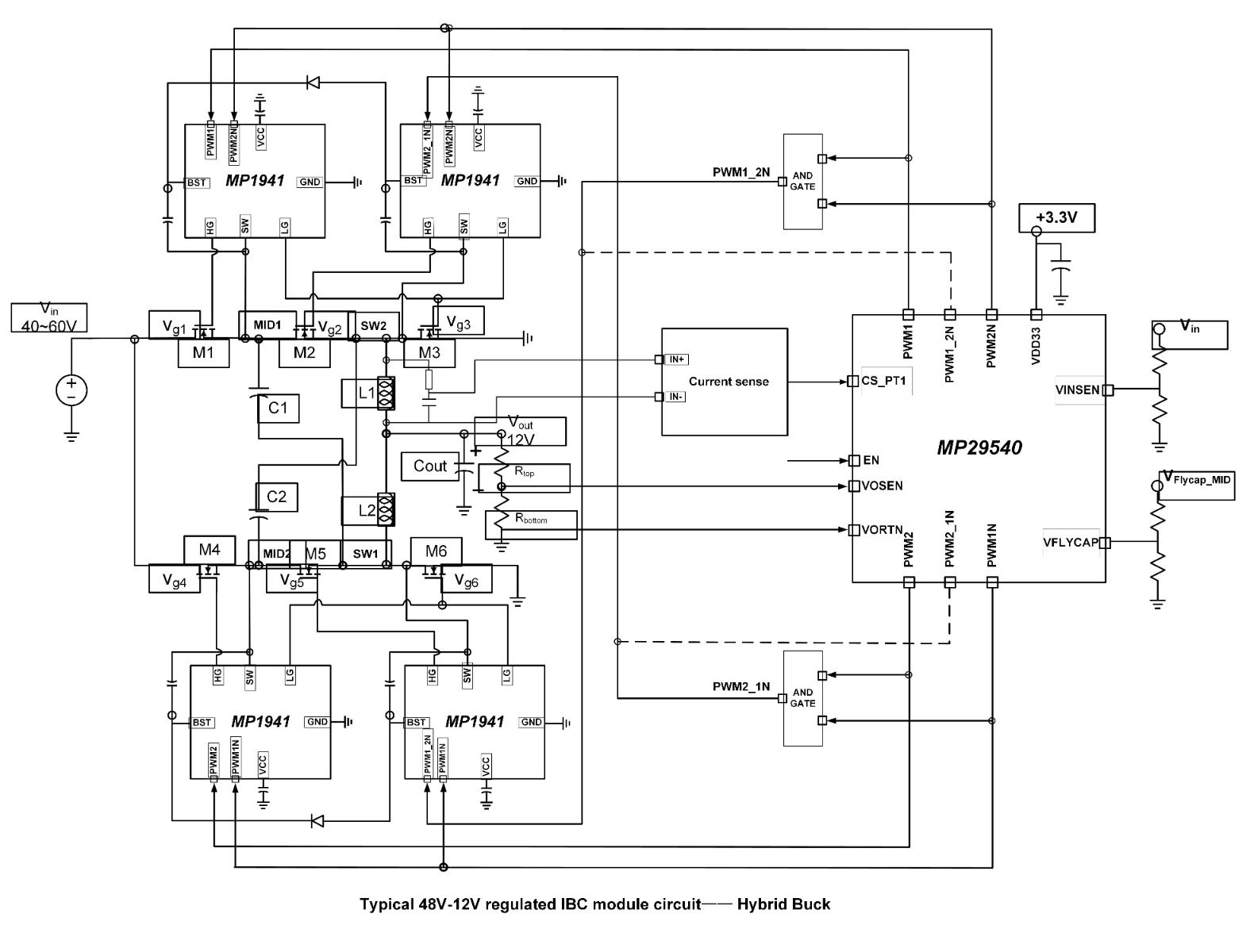
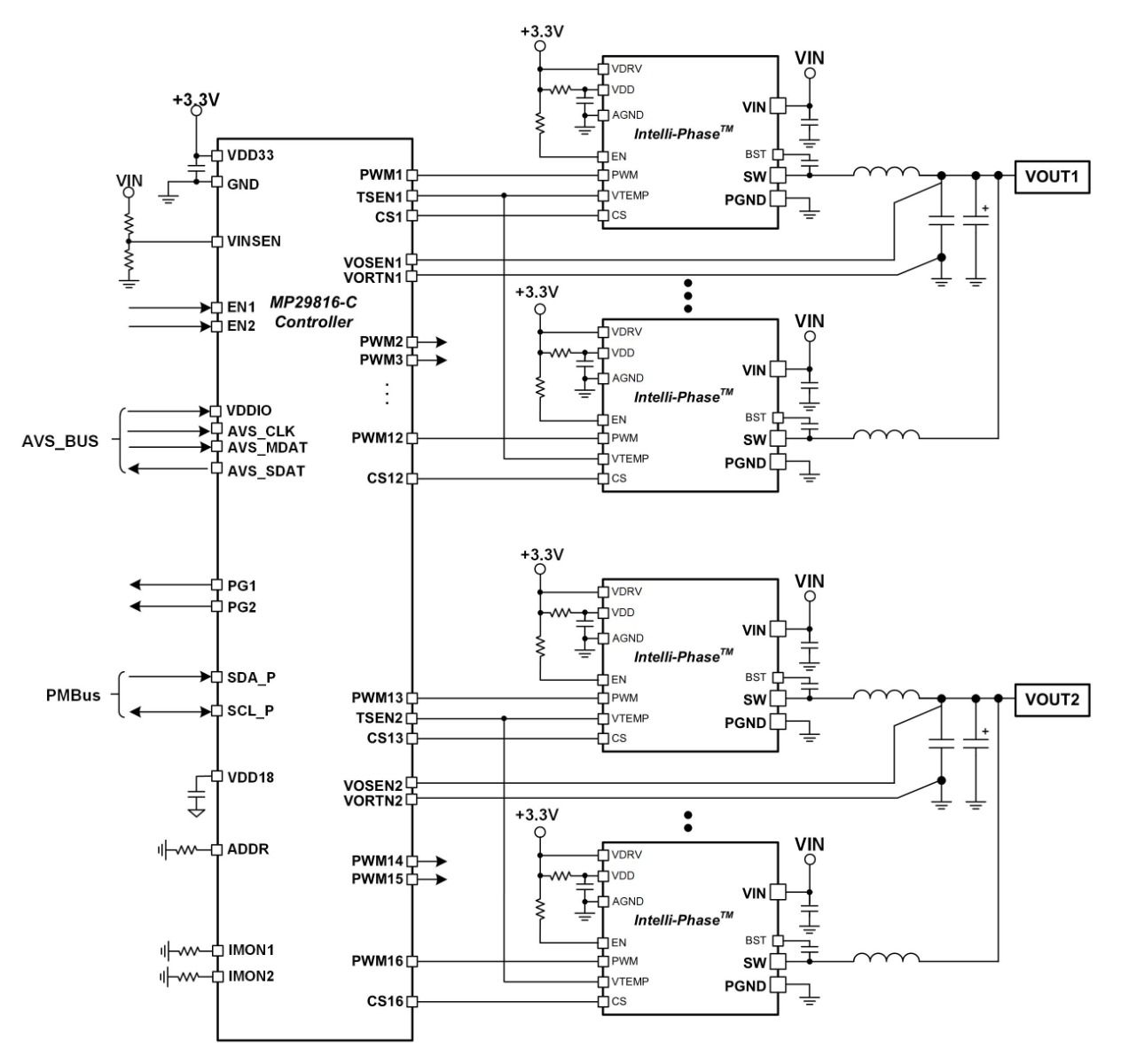
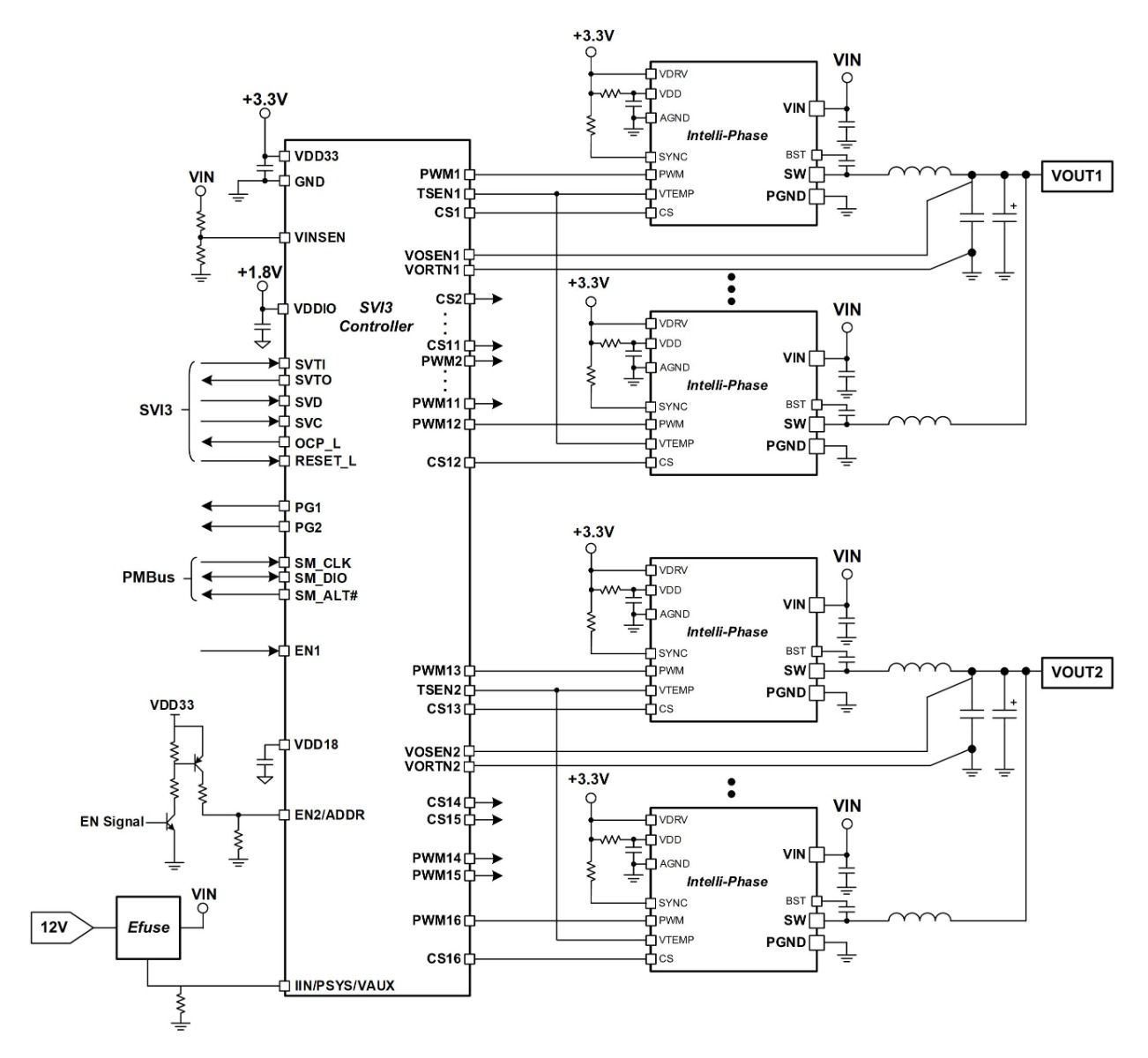

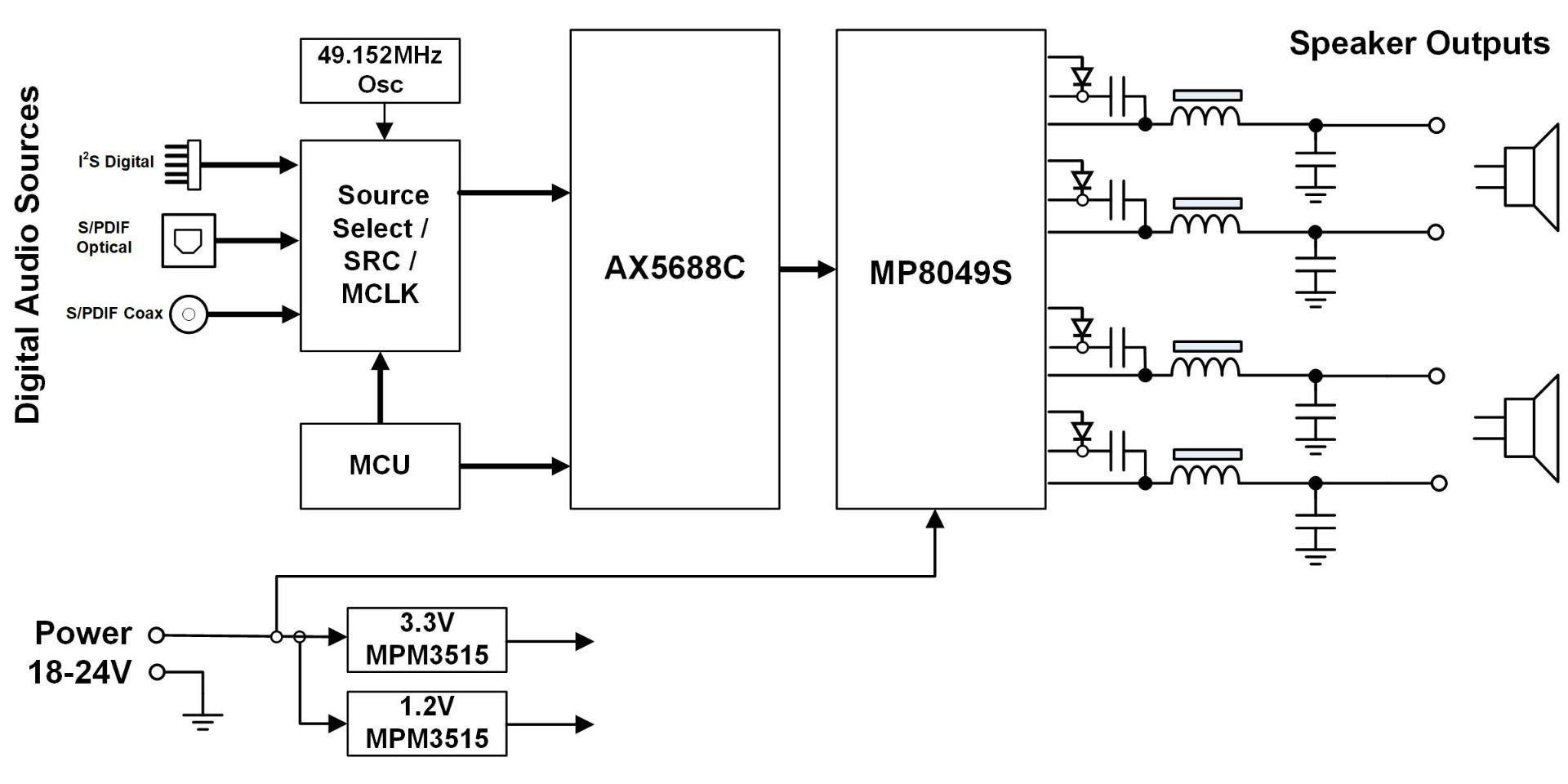
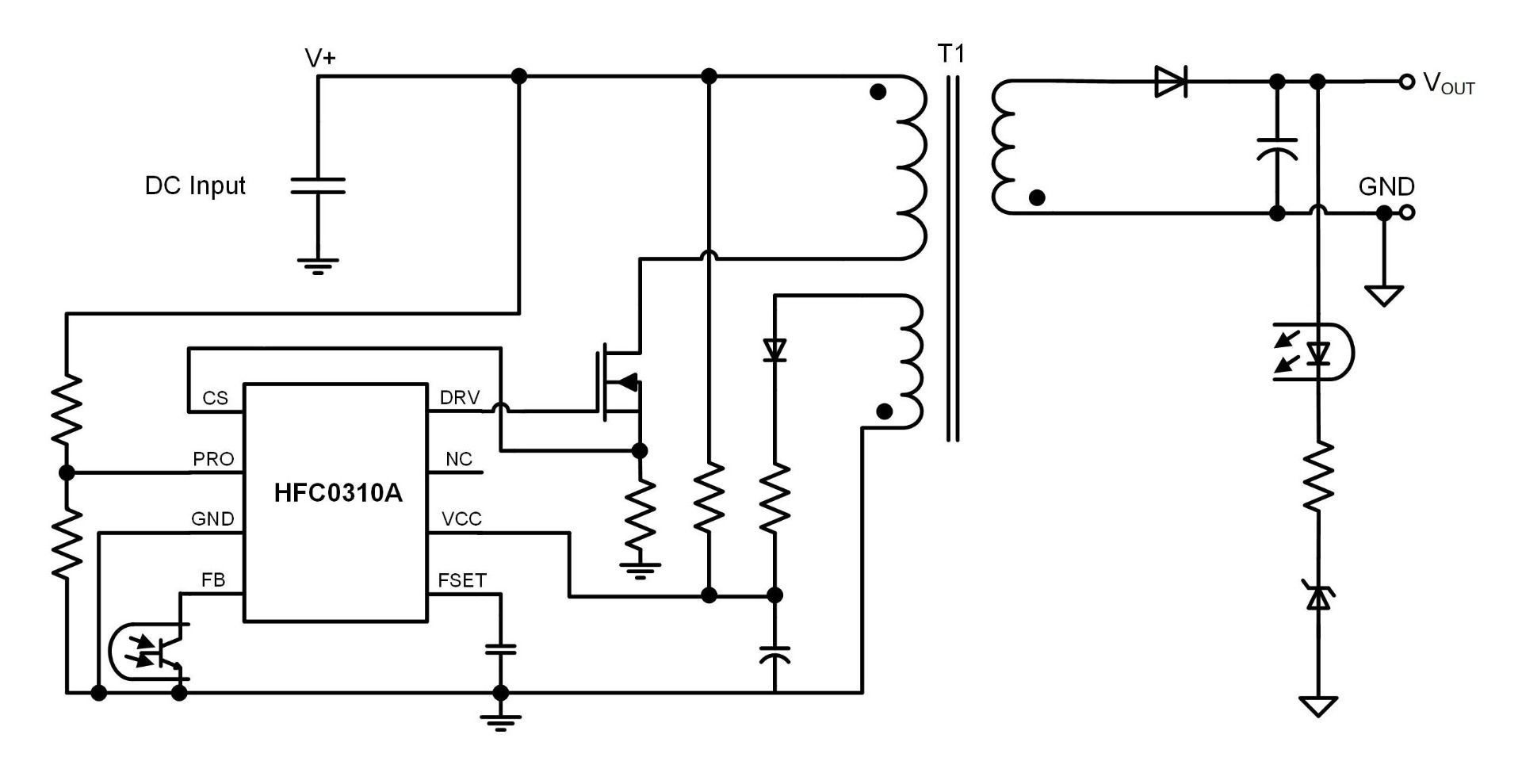


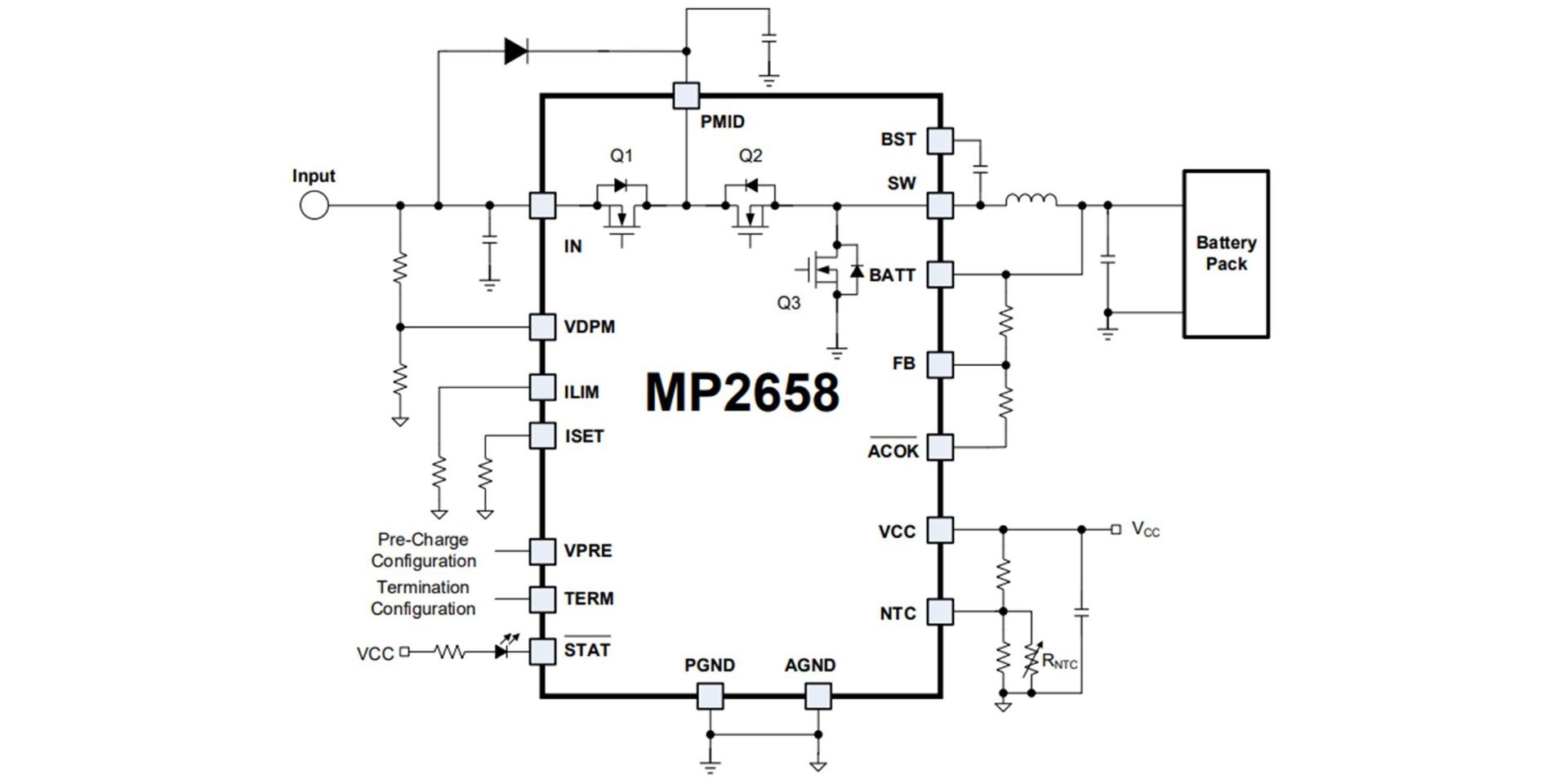
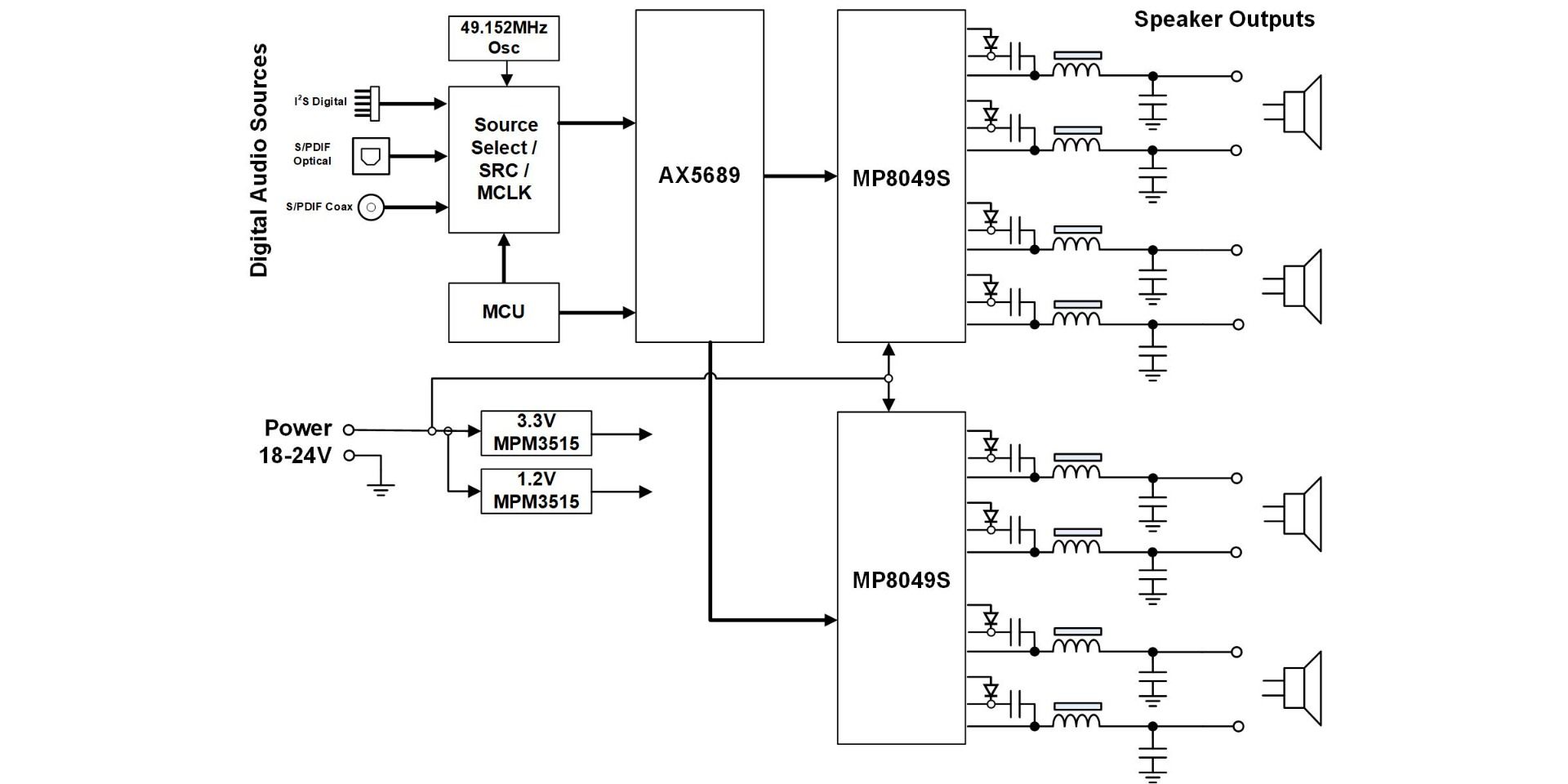

直接登录
创建新帐号